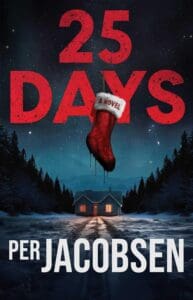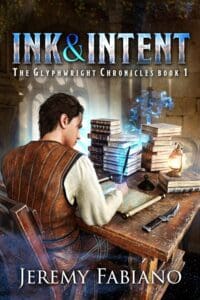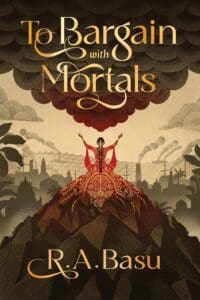Thanks to Angry Robot for having me on the Online Tour for Christ Panatier’s Stringers.
Below, you will find a Guest Post written by Chris on Inanimate Characters, why they can pull at our heartstrings just as much as any living person, but also how they can be employed to create story texture, perspective changes, and advance plot just by being present in a scene.
PICKLES AND OTHER INANIMATE CHARACTERS
By Chris Panatier
We’ve all heard that setting can be a character just as much as any sentient being. It makes sense—even though setting doesn’t act as a single, sentient entity (usually), it does act and it can affect characters, forcing them to make choices. What about inanimate objects? Can they be characters? They aren’t usually employed in the same way that setting is—for obvious reasons, but I believe they can be just as much a character in a story as any living thing. Inanimate objects are highly versatile devices that can be employed to create story texture, perspective changes, and advance plot just by being present in a scene. But they can also tug our heartstrings as if they were a person.
I think that there are two types of inanimate objects in stories outside of those included for straight world building. First, there are MacGuffins, objects that sit at the center of a conflict between characters to drive plot. They push the action by existing, but don’t take sides. We don’t even know what’s inside the briefcase from Pulp Fiction, but everyone wants it. Tolkien’s Rings of Power are the point of the story, but only drive action by being. Most any treasure or important object up to and including the Arc of the Covenant fits the bill. (Arguably, a person can be a MacGuffin—prisoners are a good example. The so-called Jewel of the Nile ended up being a man. And (beware: hot take ahead) maybe even Grogu, “baby yoda” and merchandising golden goose from Mandalorian, could be considered a Macguffin).
I’m interested in another category of the generally inanimate, things that aren’t MacGuffins and aren’t even central to the story, but upon which we readers place an emotional imprint; those inanimate objects that often evoke emotions as strong as their living co-stars. Most people will remember Wilson, the volleyball companion to Tom Hanks in the movie Castaway. Wilson wasn’t central to Hanks’ character getting off of the island, but that ball was a personified emotional support object for the main character. Another example, and a particularly influential one for me was Amy’s backpack in Justin Cronin’s The Passage trilogy.
With Wilson, you have an anthropomorphized volleyball that serves as a companion for the solitary character. Only the most heartless viewer didn’t feel terrible when Wilson floated away. We felt bad for Hanks, but for that ball as well. They’d been through so much together and now Wilson would float alone in the ocean forever, or until swallowed by a whale (we have to talk about sea trash, people).
Amy’s backpack played a different, and more profound, role in The Passage. In order to save her, Amy’s mother abandoned her at a convent. All Amy had from her life with her mother was that backpack containing a few otherwise unimportant items. In one respect, the backpack was symbolic of the time in her life when Amy had her mother. But Cronin made it so much more than that. As Amy is drawn into a vampire-saturated dystopian future, that backpack comes with, and becomes symbolic of Amy herself. As the backpack is worn down, damaged, and tossed from one place to another, so is Amy. That backpack was the first thing I looked for when Amy’s chapters came up. I was absolutely tied to that thing. When it finally disappeared, it was like innocence itself had died. And it had. For the world, for Amy.
Why do we care so much for these inanimate objects? Well, I think there’s something about human nature that makes us project our own emotions onto things. And here I think it’s because in a way, those things are us. Whereas an unliving object has no control over its destiny, the reader or audience has no say in the direction of the story. We identify with these hapless objects because they are just as susceptible to the author’s whims as we are. We lament when bad things happen to them because they are innocent bystanders without autonomy. Just like us.
Let’s talk about pickles. There is a jar of them in my latest novel, STRINGERS. I’ll admit that I didn’t envision giving pickles the Wilson or backpack treatment when I first stuck them into the story. I’d written a convenience store snack scene and I thought a full jar of pickles was a funny snack—comedy relief. But when the snackers are abducted into outer space and manage to hold onto the jar, it slowly becomes more important to the characters, and eventually gets a name: Mr. Pickles. What kind of object is Mr. Pickles? Well, he’s not a Macguffin because no one outside of his owners cares that he exists. Instead, I think Pickles is squarely at the center of a Venn diagram comprised of Wilson, Amy’s backpack, and the idea of towels from Hitchhiker’s Guide to the Galaxy—anthropomorphized for companionship, symbolic of our main characters’ tumultuous journey over which they have little control, and edible if the practical concern of hunger crops up.
For better or worse, I think there is consensus among early readers about the emotional power of this far-flung jar of pickles. Pickles has been mentioned in nearly every review, with some not being shy in their distress over some of the snack’s travails! I just love that! So remember that the next time you hunker for a crisp, briny snap of pickle, somewhere in the galaxy your favorite low-calorie snack might be someone else’s best friend.
![Stringers by [Chris Panatier]](https://fanfiaddict.com/wp-content/uploads/2022/04/51JpMeZchOL.jpg)
Knowledge can get you killed. Especially if you have no idea what it means.
Ben is not a genius, but he can spout facts about animals and wristwatches with the best of experts. He just can’t explain how he knows any of it.
He also knows about the Chime. What it is or why it’s important he couldn’t say. But this knowledge is about to get him in a whole heap of trouble.
After he and his best friend Patton are abducted by a trash-talking, flesh-construct alien bounty hunter, Ben finds out just how much he is worth… and how dangerous he can be. Hopefully Patton and a stubborn jar of pickles will be enough to help him through. Because being able to describe the mating habits of Brazilian bark lice isn’t going to save them.
Purchase from Amazon US
Purchase from Angry Robot
Add it to your Goodreads Shelf

Chris is an artist and writer living in Dallas, Texas, with his wife, daughter and a fluctuating herd of dog-like creatures (one is almost certainly a goat). He writes short stories and novels. His debut, THE PHLEBOTOMIST, was released on September 8, 2020, from Angry Robot Books, and is available everywhere.
Chris has also been a trial attorney for almost two decades. He represents people who have been injured, poisoned, or killed due to the conduct of others.
Represented by Hannah Fergesen at KT Literary.
http://www.panatier.com
http://www.facebook.com/chrispanatier
http://www.prevailandride.tumblr.com
Instagram: @chrispanatier
Twitter: @chrisjpanatier




Leave a Reply